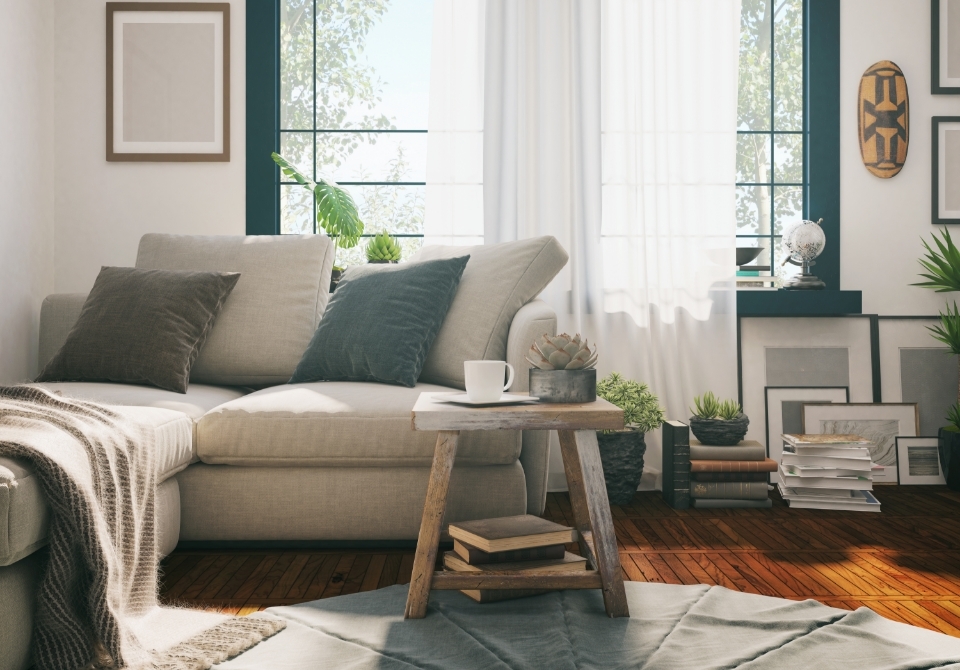
How Cellulose Insulation Promotes Wellness in Your Home
Comfort, peace and quiet are keys to a feel-good home. Whether you’re building from the ground up, retrofitting or renovating, the right insulation may just be one of the best ways to create a more comfortable, healthier space.
The insulation you choose has a huge role in the environmental impact of your home, not only by affecting energy efficiency but also by the materials used to make it. When compared to other insulation materials on the market, cellulose has been shown to release significantly less toxic-emissions. In fact, it has the highest level of recycled content in the building insulation industry, making it a great choice to reduce your home’s carbon footprint.
The type of insulation in your home is also critical for effective sound control. The insulation in your walls blocks the path for unwanted sound, and an eco-friendly insulation material is a step in the right direction for keeping noise at bay.
Need more convincing? Here’s why cellulose is a smart insulation solution.
Comparing Environmental Impacts of Insulation Materials
All insulation types are not created equal, so it’s important to compare your options for home insulation to ensure you are making the best long-term decision.
With cellulose, the same attributes that contribute to the low global warming potential make it a great choice for homeowners who desire a more sustainable home. If you’re torn between cellulose and other insulation alternatives, consider this breakdown of greenhouse gas impact, recycled content and toxic emissions: Made primarily of recycled material and highly flame and moisture resistant, cellulose helps maintain an eco-friendly balance in the home.
On the other hand, some insulation materials include chemicals that can be potentially harmful to both humans and the environment. [1] For example:
- Asbestos is a group of naturally occurring fibrous minerals that, when inhaled, can increase the risk of respiratory issues.
- Formaldehyde is a colorless, strong-smelling chemical that can have devastating effects on your health if exposed at high levels.
Having a healthier home comes down to more than the material you choose. It’s also about how those materials are produced and how they affect your family’s well-being and environmental impact.
Greenfiber insulation is free from unhealthy substances such as asbestos and formaldehyde. Unlike other insulation alternatives, it consists of 85% postconsumer paper fiber and negative embodied carbon, and it doesn’t produce any toxic emissions.
3 Benefits of Using Cellulose Insulation to Reduce Noise and Enhance Wellness
1. Cellulose insulation reduces noise by filling every crack and crevice in your walls.
The mind-body connection is a powerful one: Unwanted noise affects not only our state of mind but also our physical health. In fact, in 2018, a Centers for Disease Control and Prevention study identified elevated rates of hypertension and high cholesterol in people who regularly experienced loud noises at the office.
But when it comes to loudness, the workplace is far from the only offender. Insulation plays a role in how much unwanted noise you hear at home. To stop noise in its tracks, SANCTUARY® by Greenfiber fills the tiny joints, crevices and gaps hidden within your home’s walls — leaving less space for sound to travel.
2. Cellulose-insulated walls keep your home quiet for enhanced learning.
The revitalizing effect of a quiet space can be felt in a wide range of environments, including offices and other spaces in your home that require sound control. It may be no surprise, then, that a recent study connected noise exposure to poorer reading comprehension, lower standardized test scores and weakened long-term memory. On the flip side, reducing noise power in our homes can provide a better learning environment for our kids and a more peaceful space for them to explore their developing personalities.
3. Wall assemblies built with Greenfiber insulation reduce noise in your bedroom for better sleep.
Noise can be more than just a nuisance. It comes with varying challenges that can affect overall wellness. Insufficient sleep is one of these challenges and, according to Sleep Medicine Reviews, has been linked to obesity, diabetes, heart disease and other health issues. [2]
The good news? Reducing sound in your bedroom by even the smallest amount can greatly increase your mood, sleep and overall positivity. With quality insulation, a noise-controlled home can be easily achieved, and our SANCTUARY Homes are constructed to reduce the power of sound in the house by up to 60%. [3]
For today’s generation of homeowners, nothing surpasses the comfort of a SANCTUARY Home — a space that helps you promote well-being and dial up comfort. Ready to improve your home’s well-being and experience the benefits of using eco-friendly insulation? Choose SANCTUARY.
[1] Alex Wilson, The BuildingGreen Guide to Thermal Insulation: What You Need to Know About Performance, Health, and Environmental Considerations, 4th ed. (Brattleboro, VT: BuildingGreen, 2021).
[2] Alain Muzet, “Environmental Noise, Sleep and Health,” Sleep Medicine Reviews 11, no. 2 (April 2007): 135–42.
[3] In field testing on identical 2-by-4 exterior wall types, Greenfiber® R-13 stabilized spray-applied insulation outperforms R-15 unfaced fiberglass batts by 4 NIC rating points, which equates to a 60% reduction in sound power. A weak point in the assembly, such as flanking through windows and doors, will diminish the value of the reduction in sound power. Reduction in sound power is achieved through retrofitting, dense packing or spray applying Greenfiber into exterior walls (contractor installation is recommended for these applications). See manufacturer’s installation guide for full details on how to install to meet specifications.
- Category: Wellness
